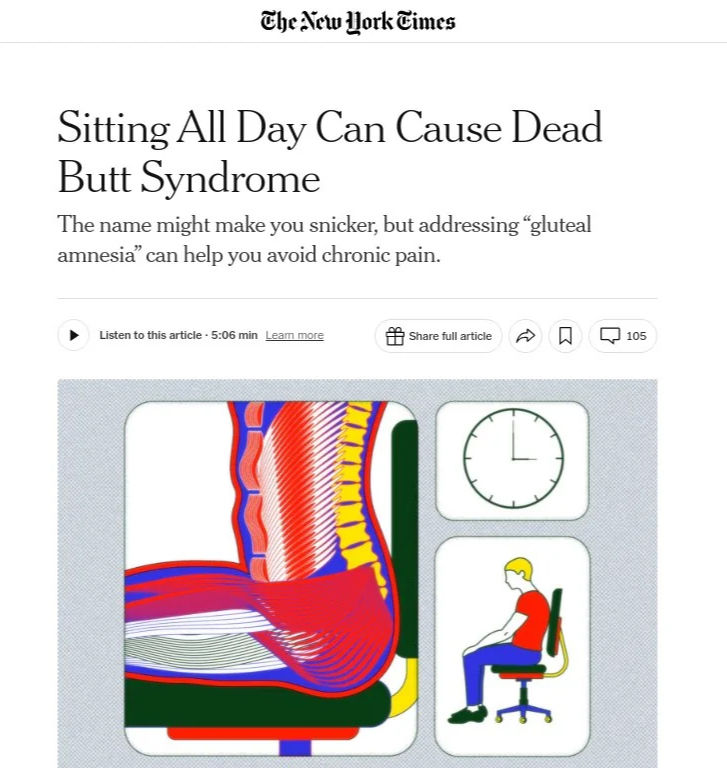September 7, 2024

As a foot nurse, I often see how issues in other parts of the body can have a direct impact on foot health. "Dead Butt Syndrome" (DBS), or gluteal amnesia, is a prime example. This condition arises from prolonged sitting, leading to weak and inactive gluteal muscles. While this primarily affects the buttocks and lower back, the resulting chain reaction can significantly impact your feet, especially in seniors who are already at higher risk for mobility issues.

The gluteal muscles are essential for stabilizing the pelvis and maintaining proper posture. When these muscles weaken due to inactivity, other muscles, such as those in the lower back, hips, and legs, must compensate. These altered body mechanics can cause misalignment, leading to increased stress on the feet, which can manifest in various painful conditions.
One of the most common foot problems linked to DBS is plantar fasciitis, a painful inflammation of the tissue that runs across the bottom of your foot. Weak gluteal muscles often lead to overcompensation by the calf muscles, increasing tension on the plantar fascia and resulting in heel pain.
Another issue that may arise is the development of flat feet or fallen arches. The glutes play a crucial role in maintaining pelvic alignment, which ensures even weight distribution across your feet. When gluteal muscles are weak, the altered gait can cause uneven pressure on your feet, eventually leading to collapsed arches and associated discomfort.


For seniors, these foot-related issues can be particularly concerning. Reduced mobility, decreased balance, and the risk of falls are already prevalent among older adults, and DBS can exacerbate these challenges. Preventing these foot-related issues involves addressing the root cause strengthening the gluteal muscles. Regular exercises like bridges, squats, and leg lifts can activate these muscles, improve posture, and reduce the strain on your feet. Additionally, stretching the calves and hamstrings can help alleviate tension and prevent further foot pain.

For those already experiencing foot pain related to DBS, a multi-faceted approach that includes physical therapy, appropriate footwear, and possibly orthotics can provide relief. Strengthening the glutes and ensuring proper alignment from the hips down to the feet is crucial in preventing the cascading effects of Dead Butt Syndrome on foot health.
For seniors and others who spend extended periods sitting, the impact of Dead Butt Syndrome on your feet shouldn’t be underestimated. Foot pain and mobility issues can sneak up on you, but by paying attention to the health of your glutes, you can break the cycle. Strong glutes aren't just about aesthetics they’re key to supporting your entire lower body. Incorporating targeted exercises into your daily routine can be the difference between walking comfortably and dealing with chronic foot pain. Don’t let inactivity sideline you; take charge of your health today and keep moving forward with confidence.
For more insights on Dead Butt Syndrome and how to protect your feet, check out the full article in The New York Times. https://www.nytimes.com/2024/09/04/well/move/dead-butt-syndrome-gluteal-amnesia.html.

Comments